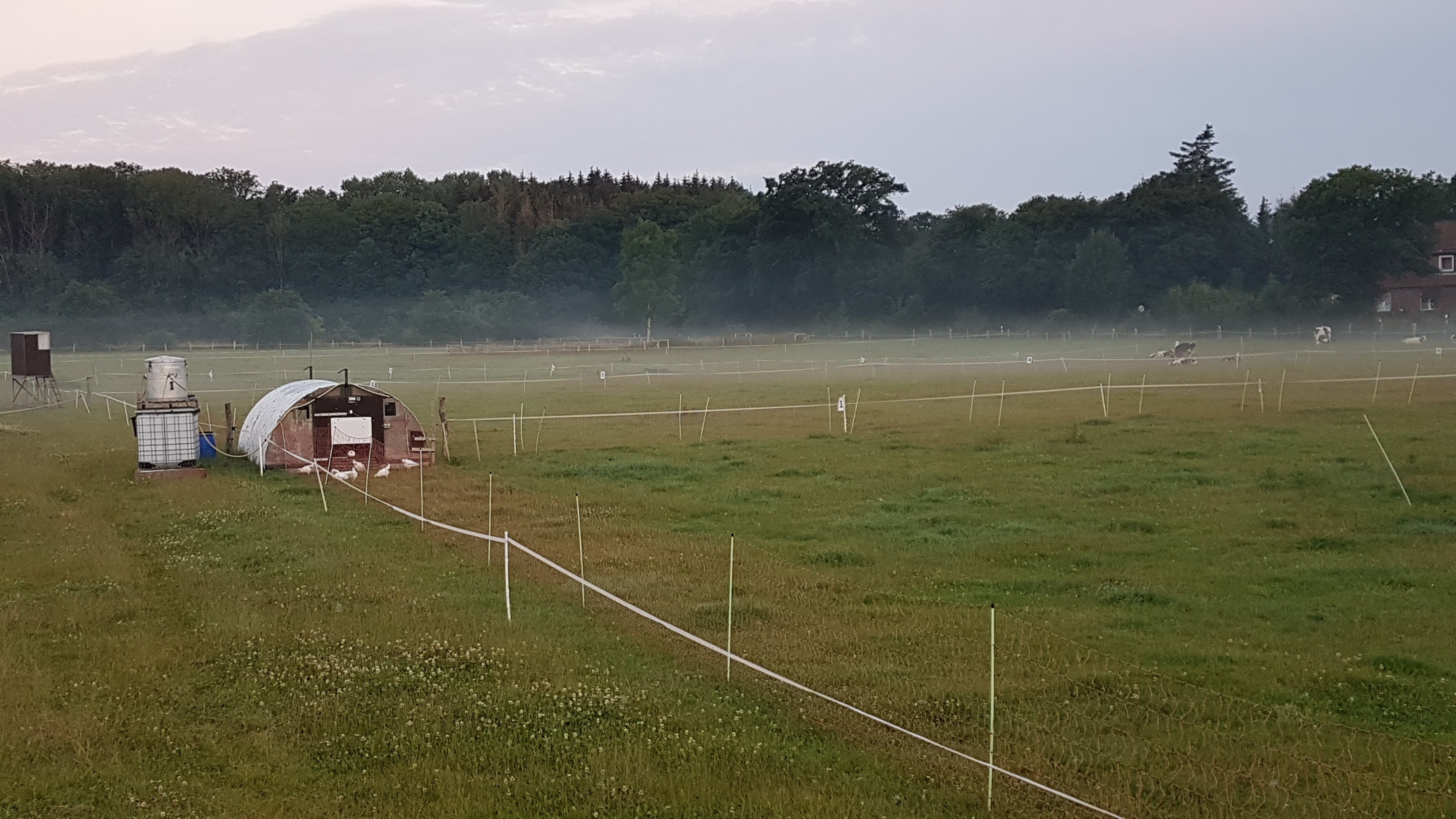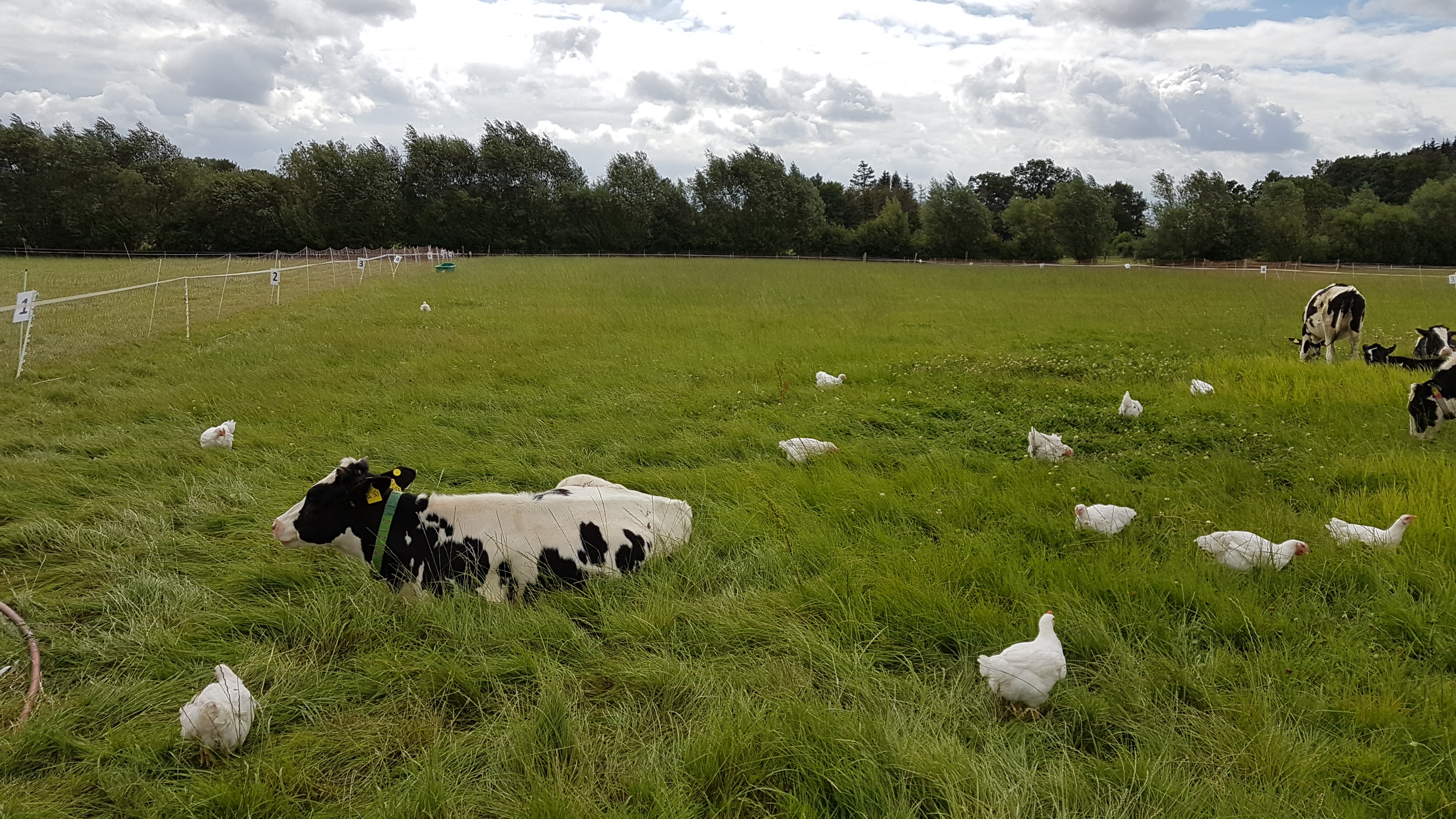Are there any benefits in keeping young cattle and broilers on the same pasture?
Over the last three years, the Thuenen Institute of Organic Farming in Northern Germany conducted experiments with joint and separate grazing of young cattle and broilers as part of the project “MIX-ENABLE”. Preliminary results indicate that the broilers benefit with fewer losses due to predatory birds whereas no effect on the young cattle was found.


Several potential benefits are associated with mixing two or more species of animals on pasture. The most prevalent ones are that one species develops a guarding function to the other, increased resource use efficiency as different species might cover different feed niches on the same pasture and interference with cycles of species specific pathogens (Martin, 2020). We investigate the potential benefits and challenges of mixing young cattle and broilers on pasture and address the following questions: Does the presence of large ruminants protect broilers against attacks of predators? Does mixing cattle with broilers have an effect on the parasitic load in cattle?
Study Design
We compared two systems with the following set-up: The first system has a group of 55 broilers with access to the same pasture as 10 young dairy cattle (German Holstein). The second system has a group of 55 broilers with access to a pasture that was grazed by 10 young cattle two weeks before. Broilers belonged to the breed Hubbard (formerly: ISA) JA 575, officially recognized by the German government as a slow-growing breed.
Both systems were embedded in a rotational grazing system with six paddocks per group. Each paddock was used for one week, so one round lasted six weeks. One experimental round ended with the slaughter of the broilers. Between 2018 and 2020 two rounds per year were conducted, in total six rounds. Each year, the same groups of young cattle were used, but the system to which they were assigned rotated in such a way that each group of cattle was subjected to both systems.
We focused on the following variables: 1) Losses of broilers due to predatory birds by collecting carcasses and validating the cause of death with a 24-7 video recording of the paddocks. 2) Percentage of broilers using the pasture and maximum range distance to the henhouse using direct observations. The observations were conducted twice per week for two hours beginning at sunrise and before sunset, respectively. 3) Lesions in broilers before slaughter. 4) Helminthic fecal egg count in cattle, collected every two weeks.
Preliminary results indicate a kind of protection when broilers and cattle share one pasture: broiler losses due to predatory birds were considerably lower in the mixed group than in the other group. In most cases broilers were killed by goshawks. Broilers without cattle also ranged the pasture in a lower distance to the henhouse. Broilers seemed not to interact with cattle feces, as scratches on the surface could not be recorded. Average weight of broilers at slaughter were about the same in both treatments. The fecal egg count did not differ between the treatments. Swab samples from pasture that were tested for salmonella were constantly negative. Concluding, in this set up, the combination of broilers and young cattle showed no negative impacts on either of the species. The broilers that had access to the same paddock as the cattle group had fewer losses due to predatory birds throughout the six rounds.
Authors
Severin Hübner, Institute of Organic Farming
Johann Heinrich von Thünen Institute, Federal Research Institute for Rural Areas, Forestry and Fisheries, Germany, severin.huebner@thuenen.de
Kerstin Barth, Institute of Organic Farming, Johann Heinrich von Thünen Institute, Federal Research Institute for Rural Areas, Forestry and Fisheries, Germany, kerstin.barth@thuenen.de
Sources
Martin G. et al (2020): Potential of multi-species livestock farming to improve the sustainability of livestock farms: A review, in: Agricultural Systems 181
The full paper can be found on Organic Eprints.
Editor: Karin Ullven / Design: Christine Dilling
